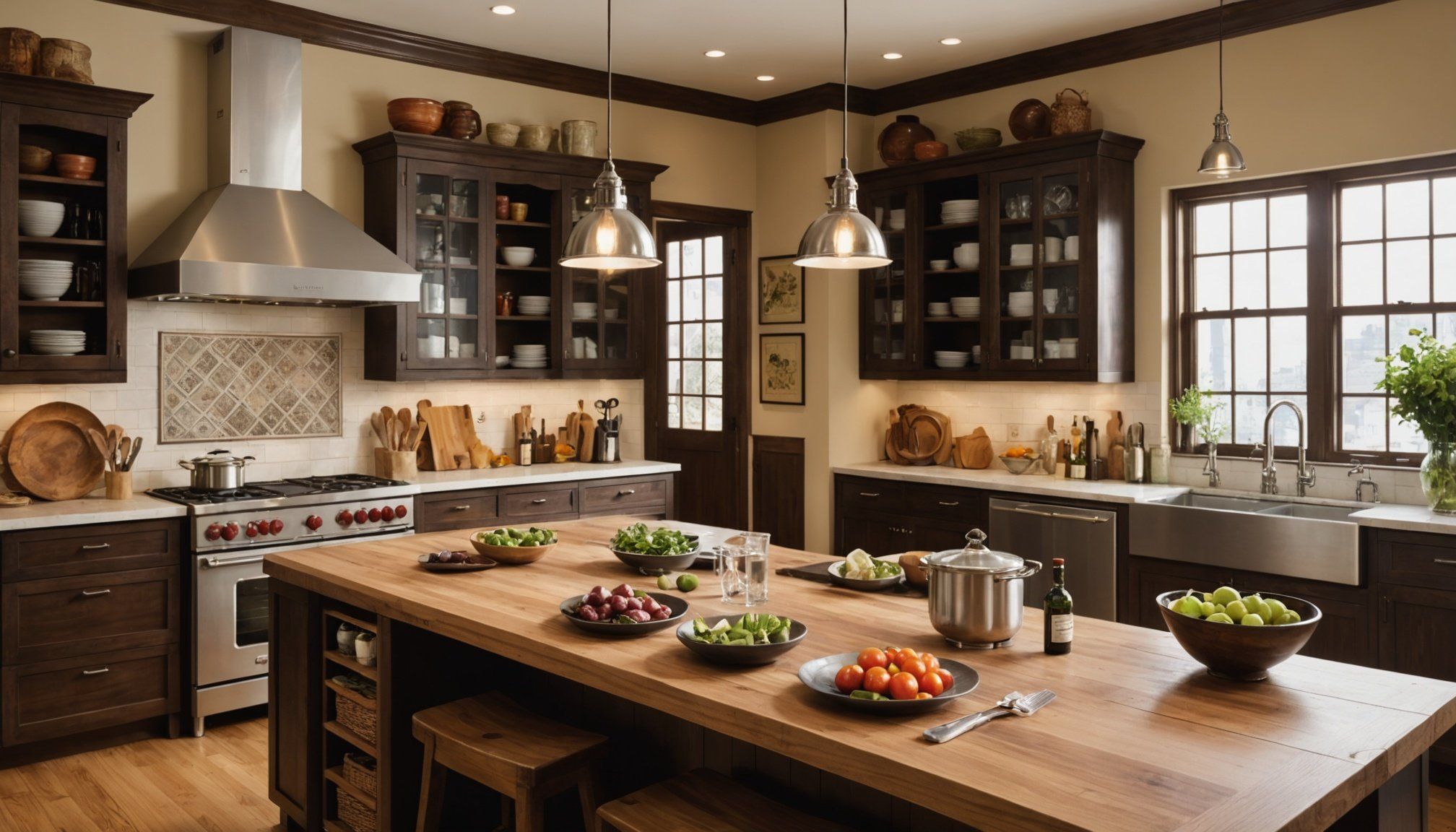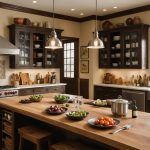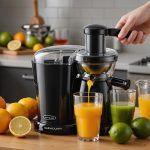Understanding Multicultural Kitchen Design
Multicultural kitchen design embraces the diverse culinary practices of cultures worldwide, creating global cooking spaces that reflect this rich tapestry. This approach prioritises the importance of reflecting one’s cultural identity within kitchen spaces, offering an environment where heritage and tradition flourish. Each culture brings unique flavours, methods, and rituals that contribute to the function and aesthetic of the kitchen, making it a crucial hub for daily life.
Diverse culinary practices demand innovative design adaptations that can accommodate various cooking styles and preferences. For example, Asian kitchens might incorporate wok burners, while Mediterranean designs could feature pizza ovens. These adaptations ensure that the kitchen is both functional and culturally resonant, aligning with the user’s needs and preferences.
Also to read : Create a Fun and Secure Baking Haven for Kids in Your Kitchen!
The benefits of adopting a multicultural design approach in kitchens are manifold. It enhances kitchen functionality by promoting an efficient and harmonious environment tailored to the user’s lifestyle. By integrating elements from multiple cultures, these design solutions offer improved space utilisation and flexibility, making them accessible and welcoming to those who enjoy exploring global cuisines. Understanding the nuances of global cooking spaces is key to creating a vibrant and efficient culinary environment.
Color Schemes and Materials for Diverse Influences
Incorporating color schemes and materials representative of diverse cultures is pivotal in enhancing multicultural kitchen design. Color psychology plays a significant role in how we perceive and feel within a space, with specific colors resonating differently across cultures. For instance, warm hues like red and gold are often used in Asian designs to symbolise prosperity and luck, whereas Mediterranean kitchens might favour earthy blues and whites to echo the calming sea and sunlit landscapes. Selecting such cultural colors enhances the sense of belonging and identity in global cooking spaces.
Topic to read : Transform your kitchen with bamboo: embrace sustainable style and unmatched benefits
Color Psychology Across Cultures
The choice of colors can profoundly influence the aesthetic and emotional ambiance of a kitchen. By understanding and integrating cultural colors in design, you can create an environment that feels both harmonious and inviting to people from different backgrounds.
Popular Materials Influenced by Different Regions
Materials used in multicultural kitchens often reflect traditional craftsmanship and local resources. Bamboo, prevalent in Asian kitchens, adds warmth, while terracotta tiles often found in Latin kitchens offer rustic charm. These materials not only add visual diversity but also connect cultural threads within the kitchen space.
Mixing Textures to Enhance Diversity
Combining varied textures can complement and celebrate multicultural ideologies within a kitchen. Integrating smooth marble with rough-hewn wood or polished metals can balance contemporary touches with traditional architecture, creating a rich tapestry of global influences.
Ergonomics and Efficiency in Multicultural Kitchen Spaces
Crafting an ergonomic and efficient kitchen ensures that culinary endeavours are both seamless and enjoyable. Ergonomic kitchen design prioritises comfort and accessibility, accommodating the diverse physical needs of users from different cultural backgrounds. For instance, adjustable countertops and accessible storage options can cater to varying heights and abilities, promoting an inclusive environment.
Designing for Comfort and Accessibility
Comfort is paramount in multicultural kitchens, where cooking might involve extended periods of preparation and intricate techniques. Designing an efficient layout with ample workspace, proper lighting, and easy-to-reach appliances ensures that every user can enjoy a pleasant and productive experience. Tailoring these elements enhances overall functionality and satisfaction.
Workflow Optimization in Diverse Cooking Environments
Efficient layouts play a crucial role in enhancing kitchen workflows, making it easier to manage tasks and maintain order during meal preparation. Keeping key stations within easy reach—such as prep, cooking, and cleaning areas—simplifies multitasking. This optimization is vital, especially in kitchens that accommodate diverse cooking methods, requiring smooth flow and minimal congestion.
Safety Considerations Across Different Cooking Practices
Safety must be a prime concern within multicultural kitchens, where varied cooking styles may necessitate distinct precautions. Integrating safety features like automatic shut-off systems, fire suppression units, and slip-resistant flooring addresses potential hazards and ensures a secure cooking space for all.
Functional Considerations for Multicultural Cooking Styles
Designing a multicultural kitchen demands understanding space requirements that align with diverse culinary practices. Each cuisine has unique cooking techniques that affect how a kitchen is used. For example, Italian cuisine may require ample space for pasta preparation, while an Indian kitchen might need room for multiple spice racks.
To accommodate these diverse cooking methods, it’s crucial to establish multitasking zones within the kitchen. These must be strategic areas where various food preparation activities can occur simultaneously without hindrance. This layout facilitates the functional kitchen design by ensuring tasks flow seamlessly.
Incorporating equipment that supports the preparation of various cuisines enhances efficiency. This includes considering appliances like a tandoor oven for Indian dishes, a pasta maker for Italian cuisine, or a rice cooker for Asian meals. These additions not only cater to specific cooking styles but also enhance the kitchen’s adaptability for global cooking spaces.
Ensuring that the kitchen’s structure aligns with the demands of international cuisine not only boosts functionality but also enriches the cultural experience of meal preparation. By prioritizing these functional elements, individuals can create a harmonious and efficient kitchen that celebrates culinary diversity.
Integrating Appliances for Global Cuisines
Global kitchen appliances play a crucial role in promoting the versatility and adaptability required in multicultural cooking spaces. Appropriate appliances facilitate the preparation of diverse culinary delights by catering to specific cooking needs. A kitchen may benefit from staple items like a rice cooker for Asian cuisine, a powerful blender for Latin American salsas, and an electric kettle for British tea. These multicultural cooking tools enhance the culinary experience, allowing enthusiasts to explore an array of recipes.
Essential Appliances for Diverse Cooking Needs
Adapting technology for multicultural kitchens requires understanding the global culinary practices at play. Embracing a wide array of multicultural kitchen appliances, from tandoor ovens for Indian dishes to pasta machines for Italian meals, ensures each cooking tradition is honoured. These appliances help in executing complex recipes with precision and authenticity, preserving the integrity of cultural elements.
Recognizing the importance of selecting tailored appliances, one can enhance efficiency and reduce preparation time. Automated pressure cookers, for example, are indispensable for quick preparation of stews and curries, optimising both workflow and energy use. By integrating adaptable kitchen technology, individuals can create a culinary experience that respects diverse traditions while streamlining cooking processes.
Incorporating Cultural References and Decorations
Incorporating cultural decor in kitchens is a unique opportunity to celebrate and express one’s heritage. By utilizing art and decor, individuals can craft inspirational kitchen designs that pay homage to their cultural roots. Whether it’s displaying traditional pottery or hanging vibrant textiles, these elements provide a personal touch that transforms the kitchen into a cultural haven.
Creating a Cohesive Theme
A well-curated theme reflects a blend of various traditions, enhancing the kitchen’s ambiance. Mixing cultural motifs, such as hand-painted tiles or intricate woodwork, can bind different influences into a harmonious setting. This artistic influence in cooking spaces not only acts as a conversation starter but fosters a deeper connection to one’s heritage.
Importance of Personal Touch
Personal touches in multicultural kitchens go beyond aesthetics; they infuse the space with warmth and identity. Items like ancestral photographs, heirloom utensils, or folk art can ground the kitchen in familiarity and nostalgia, making it inviting and unique. By honouring diverse cultural influences, kitchens become more than just functional spaces—they evolve into richly curated global cooking spaces that celebrate diversity.








